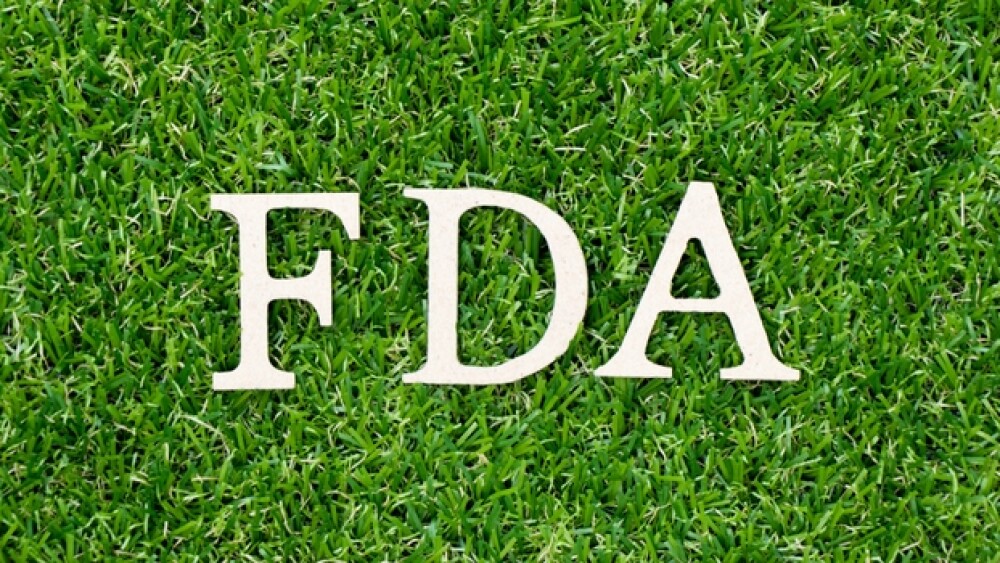In the first two weeks of September there were three scheduled PDUFA dates. One of those dates, for Celgene’s myelofibrosis drug, was approved early. Here’s a look.
September does not look to be a very busy month for the U.S. Food and Drug Administration (FDA), at least not for scheduled drug approvals. However, in the first two weeks of September there were three scheduled PDUFA dates. One of those dates, for Celgene’s myelofibrosis drug, was approved early. Here’s a look.
Celgene’s Inrebic (Fedratinib) for Myelofibrosis
Celgene has a target action date of September 3 for its New Drug Application (NDA) for Inrebic (fedratinib) for treatment of myelofibrosis. The submission in Europe is planned by the end of 2019. However, the FDA got ahead of schedule and approved the drug on August 16. It was approved for adults with intermediate-2 or high-risk primary or secondary (post-polycythemia or post-essential thrombocythemia) myelofibrosis.
The Inrebic development program had multiple studies, including JAKARTA and JAKARTA2 in 608 patients who were given more than one dose of the drug. Of the 608 patients, 459 of those patients had myelofibrosis, and 97 were previously treated with ruxolitinib (Incyte’s Jakafi). Inrebic is an oral kinase inhibitor with activity against wild type and mutationally activated Janus Associated Kinase 2 (JAK2) and FMS-like tyrosine kinase 3 (FLT3).
The drug was approved with a Boxed Warning for serious and fatal encephalopathy, including Wernicke’s. Serious encephalopathy was observed in 1.3% of patients treated with the drug, or eight out of 608, in trials. One of those cases was Wernicke’s, a neurologic emergency caused by vitamin B1 deficiency levels.
Xeris Pharmaceuticals’ Gvoke for Low Blood Sugar
Xeris Pharmaceuticals has a target action date of September 10 for Gvoke for glucagon control to treat severe hypoglycemia. Gvoke HypoPen is a ready-to-use formulation of glucagon. On June 5, the FDA issued a notification letter telling Xeris that its submission in response to the agency’s information request constituted a major amendment to the original NDA. As a result, the FDA extended the goal date by three months.
Also in June, Xeris announced positive results from a global Phase III trial of Gvoke head-to-head against Novo Nordisk’s GlucaGen HypoKit. The results were comparable.
“This is our fourth Phase III trial with Xeris’ ready-to-use glucagon,” stated Paul R. Edick, chairman and chief executive officer of Xeris, at the time. “It provides further support of the effectiveness and utility of our ready-to-use glucagon candidate, demonstrating again that it provides an effective alternative to currently available options for severe hypoglycemia. We are confident in the profile of this treatment based on the rich data we’ve collected over the course of multiple trials.”
Ardelyx’s Tenapanor for Irritable Bowel Syndrome
Ardelyx has a target action date of September 12 for its NDA for tenapanor for patients with irritable bowel syndrome with constipation (IBS-C). The NDA was submitted in September 2018. Tenapanor is a minimally-systemic small molecule inhibitor of the sodium transporter NHE3. It decreases sodium absorption in the gastrointestinal tract, which increases intestinal fluid. The NDA was built on data from two Phase III clinical trials, T3MPO-1 and T3MPO-2, and one long-term safety extension trial, T3MPO-3. The efficacy trials showed the drug had a durable effect on reducing constipation and abdominal pain in IBS-C patients.
“If approved, tenapanor would be the first medication available that works by reducing sodium uptake from the gut,” stated William Chey, professor of gastroenterology and nutrition at the University of Michigan and an investigator in Ardelyx’s IBS-C clinical trials, at the time. “In addition, in clinical trials, tenapanor has demonstrated a statistically significant reduction in pain associated with IBS-C, a critical and difficult-to-manage symptom for these patients.”





